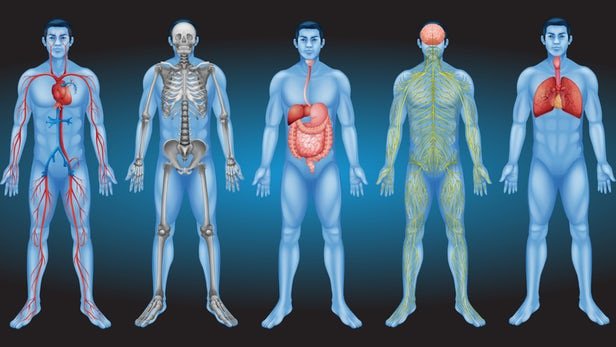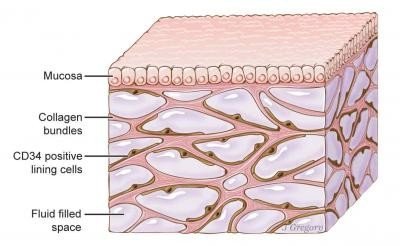What we know about the "interstitium", the supposed new human organ that has just been discovered

A team of scientists has identified a previously unknown human anatomical feature: the interstitium, all that dense connective tissue that we have under the skin and surrounding the organs, could be an organ on its own merits.
The truth is that according to a new article in "Scientific Reports", thanks to a series of new microscopic techniques it has been possible to find the structure and function of what until now we thought was a reportable cell mass, the "bubble wrap" of the human body. Whether it is an organ or not, it is something that is far from clear.
The essential is invisible to the eyes

While examining a patient's bile duct, using a new endoscopic technique (which combines laser and fluorescent dyes to examine the tissue microscopically in vivo ) they found a cavity pattern that did not fit the known anatomy of the bile duct. They realized that there was a complex network of interconnected compartments filled with liquid.
Faced with the strange results, the researchers contacted Neil Theise, an expert in anatomopathology at the University of New York, and together, they developed a new way to dehydrate the samples while maintaining, as far as possible, the anatomical structure intact. Something that did not happen before.
The conclusion is that what until now was considered a mere dense connective tissue is actually an interconnected network of small cavities filled with liquid that is supported on a reticular mesh of collagen and elastin. Until now it had not been possible to see because the processes of preparation for the microanatomic study involved some cellular dehydration that blurred the structure.
In fact, for years, it was taught that what we now know were the remains of those structures, were damages caused by the preparation process. Nothing is further from reality, as the data seem to indicate, the interstitium would act as a kind of pre-lymphatic liquid drainage system as well as the lining of the organs.
Organs everywhere
The most controversial, without a doubt, is the proposal that it be considered as an autonomous body. This is becoming a classic of modern anatomy. As the definition of organ is not clear, many scientists try to claim their discoveries in this regard. According to Theise, the interstice has its own specific functions and structures that allow it to speak of an organ on its own merits.
However, the biomedical community responds with moderation and skepticism. The discovery is interesting and certainly important, but there is still a lot of material to cut and much to investigate. From here, many avenues of investigation are opened: the researchers maintain that this new mechanism could be fundamental in the metastasis of cancer. That is the really interesting thing.